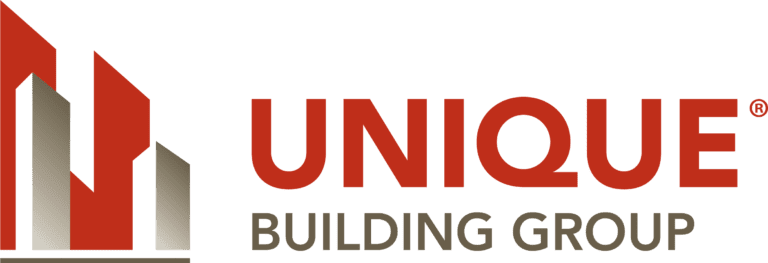Comprehensive construction safety policies and construction safety training serve as your first lines of defense on the job site, but even the best safety programs can’t eliminate accidents altogether. In order to protect workers, general contractors, and clients, subcontractors need to have adequate insurance coverage.
The types of necessary construction safety coverage vary depending on the subcontractor and the type of work, but most firms should carry general liability, builder’s risk, and workers’ compensation coverage at a minimum. Among these policies, subcontractors will find workers’ compensation policies are generally the most expensive. Workers’ compensation premiums vary depending on a number of factors. Insurance carriers use a metric known as an “experience modification rating” to evaluate the construction safety risk of a particular subcontractor and assign premiums that align with that risk.
What Is An Experience Modification Rating?
An “experience modification rating” (EMR) is a dynamic metric that is used to price a company’s workers’ compensation premiums. An EMR is used to evaluate and measure a company’s history of job site injury as well as the future chances of risk. In other words, an EMR essentially serves as an estimate of a company’s chances of filing workers’ compensation claims in the future. As a result, companies with a lower EMR are likely to pay less in workers’ compensation premiums.
What Is A Good EMR?
An EMR of 1.0 is considered to be average, so it means your construction firm is not more or less risky than another. An EMR below 1.0 means your company is less risky than the average organization. On the other hand, an EMR rating of 1.3 might mean your insurance premiums are up to 30% higher than the average company. Contractors with higher insurance premiums will find it more expensive to operate, and as a result, will likely need to bid higher on a project in order to make a profit.
An EMR is not only important for determining insurance premiums, but it also serves as an indication of a company’s construction safety record. General contractors will often consider a subcontractor’s EMR during the bid process. Because subcontractors with an EMR above 1.0 may be ineligible to bid on certain types of projects, it’s important for companies to maintain a strong rating.
How Is An EMR Calculated?
EMR calculations can vary across insurance carriers; however, it’s usually based on 13 factors related to an organization’s payroll and workers’ compensation claims over the past five years. The formula used to calculate EMR also accounts for the types of incidents that have occurred and the total monetary payout. Some insurance carriers may use additional details when calculating their score.
How To Lower Your EMR
Reducing your EMR is a good way to save on insurance premiums and increase the competitiveness of your project bids. To lower your EMR, you ultimately need to lower your number of workplace accidents. Below are three tips for subcontractors looking to improve their EMR:
1. Create A Safer Workplace – Improving construction safety is an important way to reduce workplace accidents and workers’ compensation claims. Subcontractors can improve job site safety by:
- Solid Training Programs – Construction safety training programs should be robust and include OSHA standards, job site hazards, and usage of personal protective equipment (PPE).
- Generate Awareness – Throughout the day, safety managers should make sure all job site hazards are clearly identified and employees are aware of them.
- Communication – Communication is a critical component of construction safety programs. Daily huddle meetings and toolbox talks are a good way to keep workers informed of safety-related topics. It’s important to make sure workers do not become complacent when it comes to construction safety.
- Supervise – Subcontractors should always have a qualified safety manager who is educated on safety procedures and job site hazards, and is capable of enforcing the rules. Safety supervisors should be sure to flag incidents and document issues as they occur.
- Maintain Your Equipment – Faulty or poorly maintained equipment is a common cause of workplace accidents. Subcontractors looking to improve construction safety need to ensure all equipment, machine, and PPE is in good working condition and receives regular inspections and maintenance.
- Maintain Your Equipment – Faulty or poorly maintained equipment is a common cause of workplace accidents. Subcontractors looking to improve construction safety need to ensure all equipment, machine, and PPE is in good working condition and receives regular inspections and maintenance.
2. Implement Safety Technology – Cloud storage solutions, incident management platforms, and wearable technology are just a few construction safety solutions that can be leveraged on the job site. Subcontractors who are willing to integrate the newest job site safety solutions will not only benefit from a lower EMR but will stand out as reliable subcontractors when bidding on projects.
3. Create Return To Work Programs – A good way to help reduce the amount of workers’ compensation and disability claims is to implement a good return to work program. These programs can limit the monetary payout of claims by allowing injured or sick employees to return to the job as soon as they’re approved by their physicians.
In addition to protecting your employees and your business, creating a safe workplace and improving your EMR also have other financial benefits such as lower insurance premiums.
If you’re looking for a commercial subcontractor that prioritizes construction safety above all else, contact us at Unique Building Group today. We are always investing in safety technology to reduce job site risks and improve performance.

